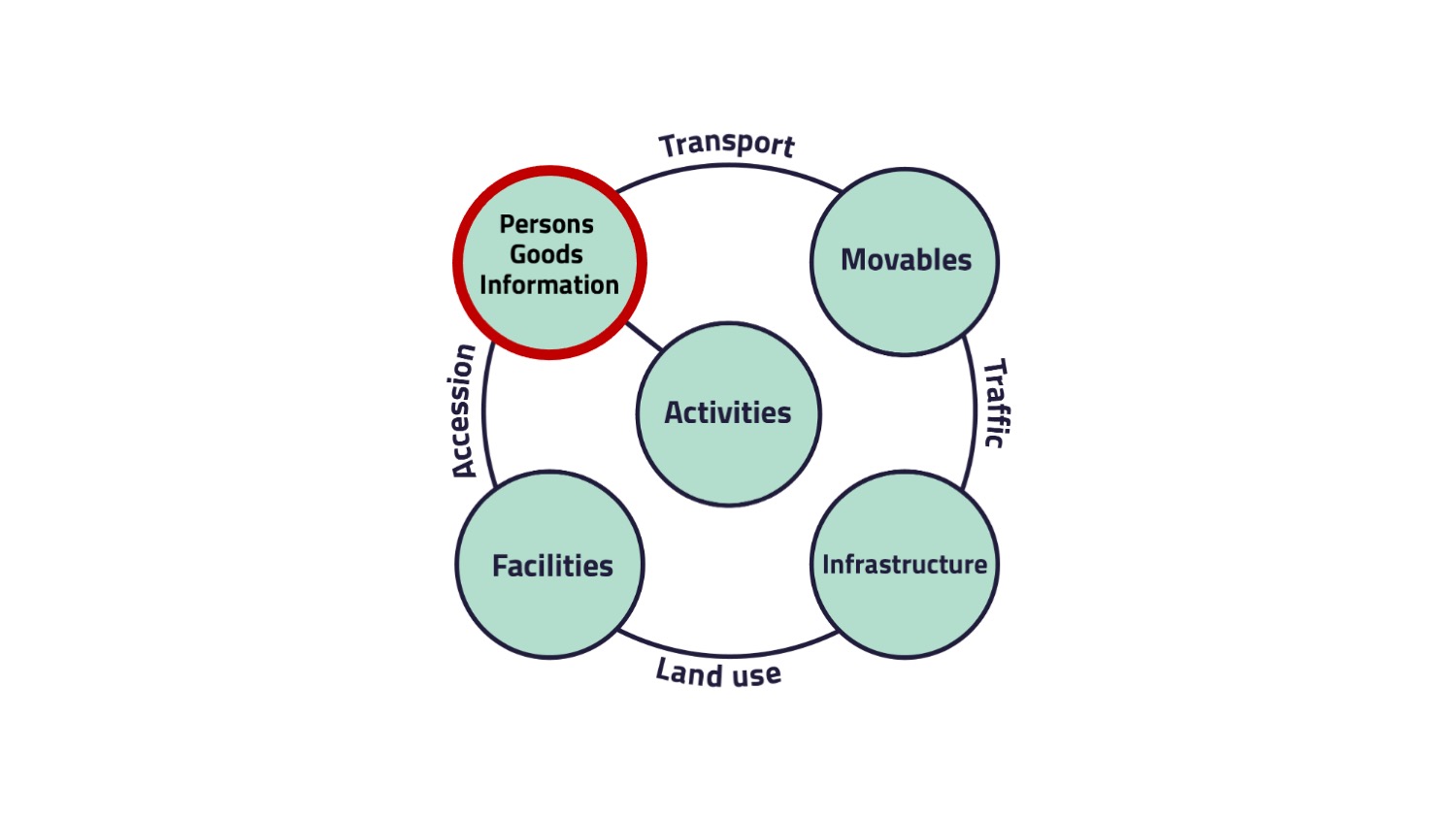Conceptual System Model of Transport and Traffic
In this section, you will learn more about the different elements and
relations of the conceptual system model of transport and traffic.
3. Persons, goods and information
This page will give you more information about the second element „Persons, Goods and Information“ of the conceptual system model. All are types of flows that occur in logistics.

Goods, persons and bytes are the objects of flow.
- Persons as the object of flow are named passengers.
- Goods are often bundled and packed to a packaging unit so the number of moving goods is bigger than the number of shipments.
- Bytes are the object of information flow.
- Information and communications technology (ICT) can change the form and number of objects that flow (e.g. Internet of Things).
The two important differences between passengers and goods are:
- Goods need to be handled (loaded and unloaded), while most passengers are capable of using their legs (built in movement tools) while embarking and disembarking a vehicle or vessel.
- Passengers are intelligent and require much less planning support than (today) the goods which are entirely dependent on someone carrying out the forwarding function for each movement stage.
Without transport, the flow of goods, persons or information is not possible.
Transport
Transport is the change of address from A to B of persons and goods. Excluding here pedestrians, who only use their legs (manual tools) transport is an interaction between persons/goods and vehicles/vessels.
A change of position is a change of system state. There are only three system states relating to transport:
A change of position is a change of system state. There are only three system states relating to transport:
- it has not yet left A,
- it has left A but not reached B and
- it has reached B.
In contrast traffic has an unlimited number of possible states.
Transport is measured either by volume (tonnes) or by transport work (TKT). The transport capacity is the maximum load of a specific vehicle/vessel in tonnes or m³ or the maximum amount of goods in tonnes or m³ that can be moved from A to B per time unit, usually day or week.
Transport is measured either by volume (tonnes) or by transport work (TKT). The transport capacity is the maximum load of a specific vehicle/vessel in tonnes or m³ or the maximum amount of goods in tonnes or m³ that can be moved from A to B per time unit, usually day or week.
Thus transport statistics is usually given in tonnes or TKT, which says nothing about the value added by the transport. This is a growing problem as supply chains grow longer and the average specific goods value increases. In e.g. air transport it makes little sense to talk about how many tonnes of microchips have been transported.
Now you know the element “goods, persons and bytes” and what transport has to do with it.
Literature
Flämig, H.; Sjöstedt, L.; Hertel, C. (2002): Multimodal Transport: An Integrated Element for Last-Mile-Solutions? In: Conference Proceeding of the International Conference “Freight Transport Automation and Multimodality. Organisational and Technological Innovations,Delft, Niederlande